- Home
- Especially for Kayakers
Starting Out In
Ocean Kayak Fishing
"Kayak fishing in rivers and lakes is one thing - but ocean kayak fishing? Isn't that just for the Eskimos?"
I said this to the man on the fishing kayak stand at the Southampton Boat Show. He went on to tell me all about this increasingly popular branch of saltwater fishing.
As it turned out, anyone more qualified to explain what ocean kayak fishing is all about would have been hard to find, for this was Andy Benham - the author of 'Discover Kayak Fishing'.
Before going any further I should say that I'm not a Kayaker - well not yet, anyhow - so anything you find here comes as a result of reading Andy's book, along with pestering the life out of him and the growing band of other kayak fishermen.
And it's not difficult to understand just why ocean kayak fishing is gaining such a large and active following, after all:~
- Compared to any other kind of fishing craft, a fishing kayak is cheap to buy;
- They're easy and cheap to maintain;
- There are no mooring or marina costs to worry about;
- They can be launched and recovered by one person;
- They can get to places that other boats can't;
- Kayaking's a great form of exercise;
- There's no more environmentally friendly way of getting afloat.
But as simple as the concept of ocean kayak fishing is, there's a lot to think about before you rush out and buy a yak for yourself.
What Are The Basic Types Of Fishing Kayaks?
Kayaks are made of either polyethylene (plastic kayaks) or fiberglass (also known known as GRP or Glass Reinforced Plastic). Plastic kayaks are cheaper than fiberglass ones, but are less durable, less rigid and more difficult to repair if damaged.
Modern plastic kayaks are produced in one piece by a rotomoulding process, in which liquid polyethylene is poured into a mould which is then spun. This eliminates the hull-to-deck joint which was often a source of problems with the the older two-part plastic kayaks.
And there are two distinct designs:~
- Sit-On-Tops (SOTs) and
- Sit-IN-Kayaks (SINKs)
Both have their pros and cons - here are the main ones:~
- You get slightly more protection from the elements with a SINK - certainly from the waist down.
- If you capsize a SINK there's a risk of being trapped inside, whereas if you capsize a SOT, you just fall off it.
- SOTs are self-bailing, SINKs aren't.
There is a further type of kayak - the inflatable fishing kayak. This type will appeal to anglers where lightweight, storage and portability are key issues.
Ocean fishing kayaks are produced in either one-man or two-man versions, and come in a number of colours. At sea a yellow kayak is the most visible, and red and orange are almost as good. For safety reasons, you should limit your colour choice to one of these three.
Traditionally kayaks are powered by an occupant with a paddle, but this is no longer the only means of propulsion. Some ocean fishing kayaks are equipped with a pair of foot operated pedals which drive a couple of underwater fins - much like a penguin's flippers - and others sport a small sail.
And in some cases human power is bypassed altogether, replaced by an electric trolling motor driving a conventional propeller.
You'll want to take all of these factors into account before deciding which is the best ocean fishing kayak for you.
How Do I Go About Rigging a Kayak for Fishing?
Some kayaks are sold already optimised to a certain extent for ocean kayak fishing, either fully fitted out with fishing rod holders and all the other kayak fishing stuff or just with the fixtures and anchor points for the kayak fishing rig already built in.
Other models are sold for pure kayaking with no thoughts of fishing at all. If you've got one of these you've some serious work to do to properly set up your kayak for fishing.
The two questions you'll be asking yourself now will be:~
- What equipment do I need, and
- Where's the best place to mount it?
One of the things there isn't a lot of on a ocean fishing kayak is space, so it has to be used carefully. First, you'll need at least one fishing rod holder, of either the flush-mount or surface-mounted type.
The former requires that you drill a largish hole through the skin of your kayak - a stressful moment this, remember 'measure twice, drill once'.
Alternatively you could go for a surface-mounted rod holder, using one of the universal mounts that are on the market. These mounts are designed such that a number of accessories can be attached to them - rod holders, GPS units, VHF radio holders, depth sounders and fish finders for example.
The easiest way of fitting these is by thru-bolting, but it's essential that all nuts, bolts and washers are of marine grade stainless steel. Any other material will quickly corrode and fail just when you don't want it to.
Use a backing pad to spread the load. Most kayak sea anglers cut them from nylon chopping boards that can be purchased cheaply from most supermarkets.
If you want to position the mount somewhere where you can't get to the nut, all is not lost. Forget the nut and bolt solution here and go for either pop rivets or well-nutsWhat are the Most Popular Techniques for Ocean Kayak Fishing?
Accomplished ocean kayak fishermen will tell you that pretty much any of the proven fishing techniques than can be used on a 'proper' saltwater fishing boat can be used on an ocean fishing kayak.
OK, big game fishermen may wish to challenge that, but mostly the kayak anglers would be right.
Take trolling for bass for instance. An ocean fishing kayak can get to places where a conventional fishing boat wouldn't want to venture. In amongst rocky outcrops? No problem for a competent kayak fisher, and a favourite habitat for bass.
It's true that most ocean kayak fishing is done from a drifting kayak, when jigging with lures for fish such as cod, mackerel and snapper are favourite techniques, along with drift fishing with a baited hook for flatfish.
In the right conditions a skillful kayaker can drop anchor, and deploy standard bottom fishing and downtiding techniques. But anchoring a kayak is a particularly risky affair, so unless you are sure of your ability to do so safely - don't!
Trolling a lure astern while paddling is another popular way of fishing from a kayak, and kayak fly-fishing is another technique that attracts its own band of specialists.
What Should I Look For When Buying an
Ocean Fishing Kayak?
Most kayak anglers start out with a 'Sit on Top' (SOT) kayak rather than a Sit In Kayak' (SINK) largely because all your kayak fishing gear will be more accessible, being stored on deck and in within arm's reach.
In a SINK your gear will be stored either in the cockpit or below decks where you'll have to undo a watertight hatch to get at it.
So, having made the SOT/SINK decision you'll need to think about:~
Beam
Unlike a monohull sailboat, which has a ballasted keel to keep it the right way up, a kayak must rely on its shape and the skill of its occupant. Beam (hull width) will contribute more to stability than any other element of the kayaks shape - and the wider it is the more initial stability it will provide.
Experienced kayakers are likely to opt for less beamy kayaks, willingly forsaking the higher initial stability for greater ultimate stability and the better speed of a narrower hull.
Length
The longer a kayak, the higher will be its speed through the water - and a long narrow hull will be faster than a long wide hull. For ocean kayak fishing, a yak of around 4.5m (15ft) to 5m (16ft) long and 71cm (28inches) wide would suit most situations, giving good stability and reasonably speed.
Weight
This is an important consideration if you've got to manhandle the kayak twixt car and ocean on your own. Clearly the longer/wider the kayak, the heavier it will be.
And it's not just the weight of the kayak to take into account - some of us saltwater anglers are not quite as slim and lithe as we might like to be. In fact, some of us ....
But enough said, the point being that our body weight must be taken into account when deciding on a kayak for ocean fishing. Kayak manufacturers put a weight capacity on the hull, so you'll need to estimate the weight of all the gear that you intend to put aboard and make sure that, together with your own weight, the weight rating isn't exceeded.
ComfortYou've got to be comfortable or you won't be able to concentrate on your fishing. The largest contributor to this will be the kayak seat. Look for one with plenty of cushioning and with adjustable straps that you can customise to your liking, and that provides plenty of support to your lower back.
If you're buying a new fishing kayak, you should be able to negotiate a more comfortable seat into the deal if necessary. And even if you're looking for a used fishing kayak, don't let a 'less than ideal' seat put you off is everything else about the yak is fine. Custom seats are widely available from specialist manufacturers; there'll be one that will fit you like a favourite armchair - you just have to find it.
The other important comfort consideration is the position of the foot pegs. Are they adjustable? They should be, so that you can paddle with your knees slightly bent. Ever ridden a bicycle with the saddle either too high or too low? Paddle a kayak with the foot pegs not properly adjusted to the length of your legs and you'll experience a similar level of discomfort.
What Special Ocean Kayak Fishing Accessories Do I Need?
There's no shortage of suppliers ready to sell you all sorts of special ocean kayak fishing gear - some of which will be essential if you're to get the most out of ocean kayak fishing and some much less so.
Fishing Tackle
Many standard items of fishing tackle will be fine, but you may find that one of the really short fishing rods designed specifically for ocean kayak fishing suits you best. These can be as short as 2.5ft (750mm) - anything much longer than 2m (6.5ft) will be cumbersome to use and difficult to stow.
A short-handled landing net will come in useful - with luck, frequently!
A kayak fishing crate will be an essential accessory to stow your gear in. OK, you can buy one specially designed for the job but it's a pretty simple affair to adapt an old milk crate or similar plastic box to meet your requirements perfectly.
Safety Equipment
One other essential piece of kit for ocean kayak fishing - a Personal Floatation Device (PFD). Ideally this should be one of the versions produced specifically for kayakers - which are more comfortable to paddle in than traditional floatation vests.
And for when it all goes horribly wrong, the cost of a VHF radio and an inshore flare pack will seem trivial indeed.
Navigational Equipment
A folding navigation chart for your fishing area and a set of tide tables should also be carried. Plus a marine compass of course - and many kayakers spring for an electronic fish-finder and a GPS set too.
And finally...
Don't miss these ocean kayak fishing tips!
Recent Articles
-
Sea Fishing Rods and Reels Must Be Compatible for a Balanced Outfit
Mar 08, 21 08:30 AM
A quality reel fitted to a quality rod doesn't necessarily make it a quality outfit. Your fishing rods and reels have to be properly matched if you're to get the best out of them, and here’s how -
Essential Lure Fishing Tips That All Saltwater Anglers Should Know
Mar 08, 21 04:51 AM
Which single lure fishing tip applies to trolling, jigging, baitcasting, spinning, fly fishing and any other branch of lure fishing? Well, it is the one at the top of this list -
Vital Jig Fishing Tips That You Really Cannot Afford To Miss!
Mar 07, 21 10:20 AM
Essential jig fishing tips to help you select the right lure for successful jig fishing, together with the techniques required to get the most out of your jig fishing outfit
















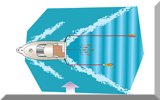

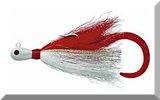
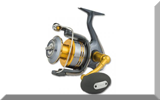
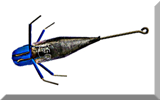
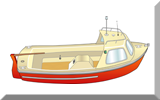
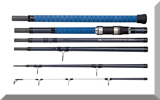
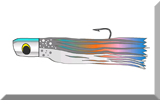
New! Comments
Have your say about what you've just read! Leave me a comment in the box below.